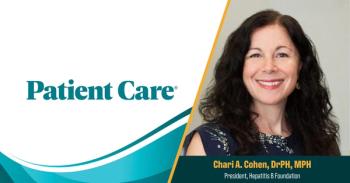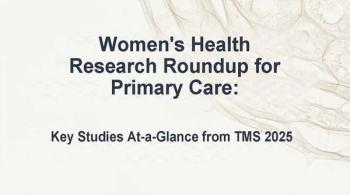
Drug Benefit Trends
- Drug Benefit Trends Vol 21 No 11
- Volume 21
- Issue 11
Medicaid Pharmacy Cost-Containment Policy Actions and Access to Prescription Drugs and Medical
We assessed the association between pharmacy cost-containment policy actions by states’ Medicaid programs and access to prescription drug and medical care, controlling for nonpharmacy cost-containment policy actions and socio-environmental differences among states.
Medicaid is the largest public health insurance program in the United States, financed by state governments and federal matching funds. It ranks as the second largest source of state spending.1 The Medicaid program provides health care coverage for almost 60 million eligible Americans who have a low income, are disabled, or are elderly.2
With the economic downturn in 2001, state revenues and budgets declined, leading to substantive bud-get deficits. As unemployment rates rose, more people became eligible for the Medicaid program.3 As a result, total Medicaid spending skyrocketed from $166 billion in fiscal year 1997 to $258 billion in 2002, a 55% increase.4 Because of the combined effects of decreasing revenues, increasing number of enrollments, and skyrocketing Medicaid spending, the states were forced to implement Medicaid cost-containment policy actions to restrain expenditures and lower the enrollment growth rate.
Between 1998 and 2002, pharmacy spending had the highest average annual growth at about 19% of Medicaid expenditures.5 Pharmacy spending was the fourth largest Medicaid expenditure in 2003, after hospital care, nursing home care, and other personal health care expenditures.6 Studies have found that Medicaid pharmacy cost-containment policy actions reduced the unnecessary use of and spending on particular drugs.7-13 However, several studies demonstrated that these policy actions also affected the well-being of Medicaid enrollees, especially in terms of accessibility to medication and prescription drugs. These problems were more likely to increase when more policies were implemented.14,15
Among all policy actions, prior authorization requirement was found to have a significant effect on Medicaid beneficiaries, particularly with regard to drug access and delays in obtaining prescription drugs. A mandatory generic requirement (generic substitute) was also found to have a negative effect on access to drugs.16 However, most of the previous studies focused on one policy at a time and did not control for others, including other pharmacy cost-containment policy actions and nonpharmacy cost-containment policy actions. Socio-environmental factors such as state characteristics were often not controlled for. As a result, the findings in those studies may be confounded and thus biased.
We proposed to evaluate the impact of pharmacy cost-containment policy actions on access to prescription drugs and medical care, controlling for nonpharmacy cost-containment and socio-environmental variables. We used a data set from the Community Tracking Study (CTS) for a sample of 25,988 adults, aged 18 or older, implementing a logistic regression analytic technique to ascertain the effects of pharmacy cost-containment policy actions.
Method
The data used in this study were obtained from the 2003 CTS Household Survey, which is a periodic nationally representative household survey.17 The samples were randomly selected from 60 communities across the United States, and the data collected in the surveys included health care access, satisfaction, use of services, and insurance coverage. Information on the sociodemographic, employment, and health status of the respondents was also included in the database.
We linked the CTS data with the cost-containment policy actions that were based on “Medicaid Outpatient Prescription Drug Benefits: Findings from a National Survey, 2003” and “States Respond to Fiscal Pressure: A 50-State Update of State Medicaid Spending Growth and Cost Containment Actions,” which were surveys conducted by the Kaiser Family Foundation in 2003.18,19 The data were further linked with the census demographic data at the state level to obtain information such as poverty level, unemployment, racial composition, and proportion of elderly in the states.
We excluded 19,699 respondents (43%) in the CTS who were younger than 18 years. We also excluded respondents from the states (15) that did not have pharmacy cost-containment policy actions in the Kaiser reports. We further excluded respondents from the District of Columbia, because of the small sample size. This resulted in a total of 28 states available for study.
A cross-sectional study design was developed to evaluate the impact of policy actions by comparing the cost-related underuse of medicine (CRUM) between recipients who were Medicaid cost-containment policy action–eligible and those who were noneligible. Thus, the intervention group consisted of Medicaid beneficiaries with specific policy actions implemented in their states and the control group was composed of Medicaid beneficiaries without specific policy actions implemented in their states and non-Medicaid enrollees with comparable age profiles.
Overall, all Medicaid beneficiaries in the intervention group had at least 2 pharmacy cost-containment policy actions implemented in 2003. Comparing health care across insurance status has been an important subject in health services research. One study recently compared Medicaid enrollees with persons who had other types of insurance in terms of their access to care in the context of Medicaid cost-containment policy actions.15
The measures of access to prescription and medical care include the following: do not receive need- ed medical care, cannot afford needed prescriptions, postpone needed medical care, and worry about medical care costs. In the CTS survey, the following questions were asked: during the past 12 months, (1) was there any time when you didn’t get the medical care you needed? (2) was there any time you needed prescription medicines but didn’t get them? and (3) was there any time when you put off or postponed getting medical care you thought you needed because you couldn’t afford it?
Each of these outcomes was analyzed as a binary outcome using a logistic regression analysis model. The main predictors in the model included the following 9 prevailing pharmacy cost-containment policy actions: prior authorization, mandatory generics required, copayment method, step therapy or fail-first requirement, limit on number of prescriptions and number of refills per month, preferred drug list, OTC coverage, payment method, and purchasing method.
These pharmacy cost-containment policy actions were used as a summary measure by counting the total number of actions in each state. This summary measure served as the main predictor in our model, which controlled for 8 nonpharma-cy cost-containment policy actions, which were provider payment method, benefit reduction, eligibility cuts, beneficiary copayment, managed care expansion, disease and case management, fraud and abuse, and long-term–care reduction.
Provider payment methods refer to the policy action of cutting or freezing the provider payment rates. Lowering the provider payments would negatively affect providers’ availability to accept these patients, and as a result, as recent research has suggested, patients would have increased difficulty in finding a provider and obtaining timely appointments.20 Managed care expansion has been shown to be associated with reduction of choices of providers. Disease and case management was targeted at high-cost cases, such as those associated with diabetes, asthma, and heart disease. While it was aimed at improving the efficiency of treatments, it was also used to combat fraud and abuse. Long-term care is highly expensive and consumes much of households’ savings; thus, reduction of payment for long-term care would likely strain the budgets of beneficiaries and spill over into affordability of all types of medical care. We believe all those nonpharmacy policy actions have broad implications for access to care by low-income Medicaid beneficiaries.
In addition, patients’ demographic and states’ socio-environmental variables were controlled for, including age, sex, race, educational attainment, family size, household income, body mass index, health status, fraction of minority, fraction of elderly, fraction of women, average individual income, poverty rate, home-ownership rate, state population, and electoral votes in 2000. We conducted separate analyses by examining the effects of pharmacy cost-containment policy actions and nonpharmacy cost-containment policy actions individually and concurrently. All the analyses were weighted to represent the sampling and national population.
Results
The number of persons in the survey (N = 25,988) was weighted to represent 130.7 million people in the nation for the analysis, in which 7.2% were Medicaid enrollees. The derivation of the total sample of 25,988 for analysis is depicted in
The correlations among individual pharmacy and nonpharmacy cost-containment policy actions were weighted to reflect the sampling design. The prior authorization strategy strongly correlated with several other strategies, including mandatory generics required (r = 0.86), copayment method (r = 0.91), limit on number of prescriptions per month (r = 0.82), OTC coverage (r = 0.92), payment and purchasing methods (r = 0.99), provider payment method (r = 0.97), and fraud and abuse (r = 0.81).
Most Medicaid enrollees in this study were female (69%) and were younger than 45 years (55%). Twenty-two percent of Medicaid beneficiaries were African American. In addition, Medicaid enrollees had a lower education level (38% less than high school graduate), had a lower family income (79% less than $20,000), were more likely to live by themselves (49% single person in family), and had fair or poor health status (43%), compared with adults not enrolled in Medicaid.
Analyses on the effects of incremental pharmacy and nonpharmacy cost-containment policy actions were performed separately and concurrently in a logistic regression analysis (
Discussion
Often, states simultaneously implement multiple cost-containment policy actions. We found that individual policy actions were correlated with one another within the pharmacy and nonpharmacy cost-containment actions and across them. This clearly indicates that pharmacy cost-containment policy actions were a part of overall efforts by states to contain health care costs. Accordingly, this situation imposes a challenge when researchers attempt to isolate and analyze the effects of particular individual policy actions.
We analyzed the marginal impacts of pharmacy cost-containment policy actions, controlling for nonpharmacy policy actions. Our results indicated that both pharmacy and nonpharmacy policy actions were associated with cost-related underuse of medicine and if nonpharma-cy cost-containment policy actions were not controlled for, the effect of pharmacy cost-containment policy actions would be overestimated.
We found that nonpharmacy cost-containment policy actions were significantly correlated with unmet medical needs. Interestingly, it was the nonpharmacy cost-containment policy actions rather than the pharmacy cost-containment policy actions that were associated with increasing likelihood that patients could not afford prescription drugs. This could imply that nonpharmacy cost-containment policy actions had a broader impact on the costs and affordability of medical care and that as medical care costs increased and consumers’ budgets were constrained, they were less likely to be able to afford prescription drugs.
We also found that pharmacy cost-containment policy actions were associated with postponing the medical care needed. We reasoned that consumers might have higher price sensitivity with prescription drugs than with acute/institutional care and, therefore, prescription drug use was the first line of healthcare services postponed by consumers when faced with pharmacy- and nonpharmacy cost-containment actions.
The impact of pharmacy cost-containment policy actions is complex. Our findings suggest that without taking the nonpharmacy cost-containment policy actions into account, the effect of pharmacy cost-containment policy actions would be confounded. For future studies on the effect of pharmacy cost-containment policy actions, concurrent nonpharmacy policy actions should be considered and taken into account in the analysis.
There were several limitations in this study. The cross-sectional design limited inference about causality. A longitudinal study design should be conducted in the future to further ascertain policy effects. Recent research has shown a clear upward trend in cost control policies.21,22 Our analy-sis also indicated multicollinearity among policy actions; thus, analysis on the effect of individual policy actions was not possible. In our analysis, each policy action was accounted for with an equal weight in the summary measure of policy actions, and this may not be true because not all policy actions were equal in their effects. Future studies should be directed toward developing a weighting scheme to assess the overall impact of Medicaid policies on access to prescription and medical care.
While we controlled for patients’ characteristics, including socioeconomic variables, health variables such as body mass index and general health perceptions, and state characteristics, we were not able to control for disease-specific variables, such as mental health and chronic conditions in the analysis. Thus, the analysis could be confounded, and the direction of the resulting bias was unknown. Finally, access to prescription drugs has changed for the 6.1 million Medicaid-Medicare recipients who were dual-eligible in 2006 because their prescription drug coverage was transferred from Medicaid to the Part D program under Medicare. A recent study has indicated that the implementation of Medicare Part D had little effect on the use of several of the drugs analyzed in the study.23 Further study on the full impact of Part D on this small but important subpopulation in Medicaid would shed further light on access to care in the disadvantaged population.
Health services researchers, managed health care decision makers, policy makers, medical directors, and pharmacy directors of managed care organizations may find this study useful in evaluating the breadth of pharmacy and nonpharmacy cost-containment policy actions and their respective impacts on cost-related underuse of medicine.
References:
References
1. Kaiser Family Foundation. The role of Medicaid in state economies: a look at the research. Kaiser Commission on Medicaid and the Uninsured. http://www.kff.org/medicaid/7075a.cfm. Published January 9, 2009. Accessed October 22, 2009.
2. Kaiser Family Foundation. Total Medicaid enrollment FY2006. Kaiser Family Foundation State Health Facts.org. http://www.statehealthfacts. org/comparemaptable.jsp?ind=198&cat=4. Accessed October 1, 2009.
3. National Governors Association, National Association of State Budget Officers. The Fiscal Survey of States. December 2008. http://www.nasbo. org/Publications/PDFs/Fall2008FiscalSurvey. pdf. Accessed October 1, 2009.
4. Centers for Medicaid and Medicare services. Net reported Medicaid and SCHIP expenditures FY 2004-FFY 1997. http://www.cms.hhs.gov/ MedicaidBudgetExpendSystem/Downloads/ 2004to1997.pdf. Accessed October 1, 2009.
5. Holahan J, Bruen B. Medicaid spending: what factors contributed to the growth between 2000 and 2002? Kaiser Commission on Medicaid and the Uninsured. http://www.kff.org/medicaid/ loader.cfm?url=/commonspot/security/getfile. cfm&PageID=22135. Published September 2003. Accessed October 1, 2009.
6. Smith C, Cowan C, Sensenig A, et al; Health Accounts Team. Health spending growth slows in 2003. Health Aff (Millwood). 2005;24:185-194.
7. Hartung DM, Touchette DR, Ketchum KL, et al. Effects of a prior-authorization policy for celecoxib on medical service and prescription drug use in a manged care Medicaid population. Clin Ther. 2004;26:1518-1532.
8. Fischer MA, Schneeweiss S, Avorn J, Solomon DH. Medicaid prior-authorization programs and the use of cyclooxygenase-2 inhibitors. N Engl J Med. 2004;351:2187-2194.
9. Fischer MA, Choudhry NK, Winkelmayer WC. Impact of Medicaid prior authorization on angiotensin-receptor blockers: can policy promote rational prescribing? Health Aff (Millwood). 2007; 26:800-807.
10. Smalley WE, Griffin MR, Fought RL, et al. Effect of a prior-authorization requirement on the use of nonsteroidal antiinflammatory drugs by Medicaid patients. N Engl J Med. 1995;332:1612-1617.
11. Carroll NV, Smith JC, Berringer RA, Oestreich GL. Evaluation of an automated system for prior authorization: a COX-2 inhibitor example. Am J Manag Care. 2006;12:501-508.
12. Cunningham PJ. Medicaid/SCHIP cuts and hospital emergency department use. Health Aff (Millwood). 2006;25:237-247.
13. Soumerai SB. Benefits and risks of increasing restrictions on access to costly drugs in Medicaid. Health Aff (Millwood). 2004;23:135-146.
14. Cunningham PJ. Affording prescription drugs: not just a problem for the elderly. Center for Studying Health System Change. http://www. hschange.com/CONTENT/430/430.pdf. Published April 2002. Accessed October 1, 2009.
15. Cunningham PJ. Medicaid cost containment and access to prescription drug. Health Aff (Millwood). 2005;24:780-789.
16. Hoadley J. Cost containment strategies for prescription drugs: assessing the evidence in the literature. Kaiser Family Foundation. http:// www.kff.org/rxdrugs/loader.cfm?url=/ commonspot/security/getfile.cfm&PageID= 51885. Published March 2005. Accessed October 1, 2009.
17. Strouse R, Carlson BL, Hall J. Community Tracking Study: Household Survey Methodology Report 2003 (round four). Appendices to Technical Publication No. 62. http://www.hschange. org/CONTENT/758/758.pdf. Published March 2005. Accessed October 1, 2009.
18. Smith V, Ramesh R, Gifford K, Ellis E. States respond to fiscal pressure: a 50-state update of state Medicaid spending growth and cost containment actions. Kaiser Commission on Medic- aid and the Uninsured. http://www.kff.org/ medicaid/upload/States-Respond-to-Fiscal-Pressure-A-50-State-Update-of-State-Medicaid-Spending-Growth-and-Cost-Containment- Actions-Report.pdf. Published January 2004. Accessed October 1, 2009.
19. Crowley JS, Ashner D, Elam L. Medicaid outpatient prescription drug benefits: findings from a national survey, 2003. Kaiser Commission on Medicaid and the Uninsured. http://www.kff. org/medicaid/upload/Medicaid-Outpatient-Prescription-Drug-Benefits-Findings-from-a-National-Survey-2003.pdf. Published December 2003. Accessed October 1, 2009.
20. Long SK, Masi PB. Access and affordability: an update on health reform in Massachusetts, fall 2008. Health Affairs (Millwood). 2009;28:w578-w587.
21. Weissman JS, Zaslavsky AM, Wolf RE, Ayanian JZ. State Medicaid coverage and access to care for low-income adults. J Health Care Poor Underserved. 2008;19:307-319.
22. Simon K, Tennyson S, Hudman J. Do state cost control policies reduce Medicaid prescription drug spending? Risk Manage Insur Rev. 2009;12: 39-66.
23. Shrank WH, Patrick AR, Pedan A, et al. The effect of transitioning to Medicare Part D drug coverage in seniors dually eligible for Medicare and Medicaid. J Am Geriatr Soc. 2008;56:2304-2310.
Articles in this issue
almost 16 years ago
Untreated Chronic Mental Illnessalmost 16 years ago
Why Physicians Do Not Follow Some Guidelines and Algorithmsalmost 16 years ago
The Value of Health in Health Reformalmost 16 years ago
FDA’s New Campaign: Safe Drug Usealmost 16 years ago
Most Older Adults Do Not Receive Preventive Health Servicesabout 16 years ago
SSRIs and Sexual Dysfunctionabout 16 years ago
How Has Part D Influenced Access to Medications?about 16 years ago
Managing Allergic Rhinitis: The Role of PharmacotherapyNewsletter
Enhance your clinical practice with the Patient Care newsletter, offering the latest evidence-based guidelines, diagnostic insights, and treatment strategies for primary care physicians.















































































































































































































































































